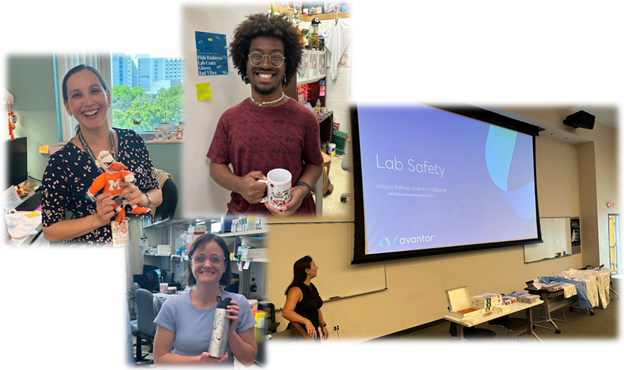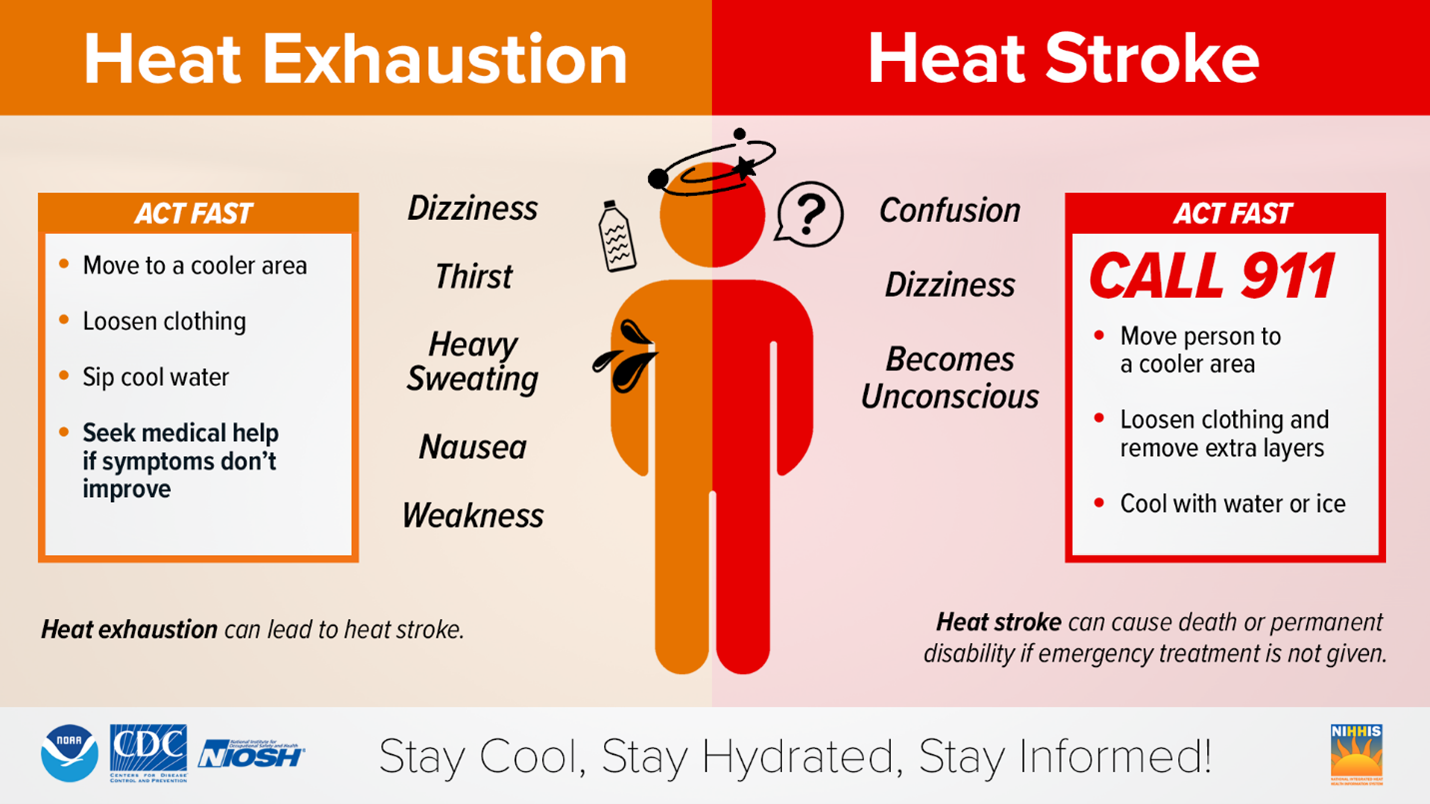Environmental Health & Safety from the Director's Desk
|
|
|
|
Welcome to the Fall Semester!
As we kick off a new academic season, we’re excited to welcome both new and returning members of our community. The Environmental Health & Safety (EHS) team is here to support a safe and productive semester for everyone.
To start things off, remember to conduct lab safety orientations for new personnel and offering refresher sessions for current lab users. These sessions are essential for maintaining a safe working environment and ensuring everyone is up to date on best practices and compliance requirements for your laboratory. Please reach out if you need support or a training from EHS. And remember – all new students and personnel should at a minimum complete the online Laboratory Safety Training available through ULearn or Blackboard. See our Biosafety article for more information.
|
In other news—meet our resident crocodile! He has taken up temporary residence at the lake on Coral Gables campus and has already become a bit of a campus celebrity. Please enjoy observing him from a safe distance and help us keep the area respectful and secure for all.
Wishing you a successful and safe semester ahead!
|
 |
Warm regards,
Jennifer Laine, DrPH
Executive Director, EHS
|
|
|
|
EHS Training Requirements for Laboratory Personnel
Working in a lab, you've probably found yourself wondering which EHS training applies to you. Our Biosafety Training webpage lists all the courses we offer – and we keep it updated whenever we make changes or launch something new.
Please note that the following is not an exhaustive list of EHS training requirements. Depending on your lab's operations, additional courses—such as fire safety training—may be necessary.
- Biosafety Training – A biosafety training must be completed every 3 years for anyone working in a lab utilizing biological materials, both hazardous and non-hazardous. There are currently 2 options researchers can choose from:
- General Biosafety – This is more of a traditional biosafety training and is appropriate for most bio lab workers.
- Biosafety for Clinicians – This biosafety training is geared specifically for clinical researchers whose work revolves primarily around IRB submissions, it combines essential concepts from the NIH Guidelines.
- UHealth OSHA’s Bloodborne Pathogens, Biomedical Waste, Latex Allergy and TB Training – This training is required for anyone working in a biological laboratory and covers essential concepts that are mandated by state and federal regulations. It must be retaken annually.
- Bloodborne Pathogens Training – This is a training alternative covering only bloodborne pathogens concepts for labs specifically working with human source materials and seek to complete biomedical waste training separately. For those opting for this training, it is required annually.
- Recombinant DNA Training – This training is for researchers working on recombinant or synthetic nucleic acid molecules or genetically modified organisms and is required for anyone conducting work on an IBC protocol. It must be retaken every 3 years.
- Laboratory Safety – This is the standard issue lab safety training to be taken by anyone working in a laboratory. It must be retaken every 5 years.
- Basic Laser Safety – This training is required for anyone working with a laser and must be retaken every 3 years.
- Shipping Training – Per DOT and IATA regulations, anyone participating in the shipping of materials from our University must complete shipping training every 2 years. There are 2 shipping training courses, one or both may be required depending on the nature of the shipment.
- Shipping of Dangerous Goods – This training provides a comprehensive overview of DOT and IATA regulations and is mandatory for individuals involved in the shipping process or those preparing lab samples for shipment.
- Shipping of Biological Materials – This training focuses on the shipment of biological materials—both hazardous and non-hazardous—and includes guidance on commonly used preservatives for transporting such samples. It is a required supplement to the Shipping of Dangerous Goods training for anyone involved in shipping biological materials.
A final important reminder: Principal Investigators are expected to complete the same safety trainings as their researchers.
Join the Festivities of Biosafety Month This October
Each October, we celebrate Biosafety and Biosecurity Month as an opportunity to highlight our commitment to a strong safety culture at the U. Since 2020, we've hosted annual webinars showcasing key projects that reinforce this mission. Last year, we took the celebration even further—adding complimentary lunch during our 'lunch and learns' and distributing a wide range of prizes to participants of both the webinar and the in-person sessions.
As we start preparing for this year’s Biosafety Month, we invite you to stay tuned for announcements about upcoming events and take part in as many as possible. You can also check our Biosafety webpage, where we'll share details as plans develop.
|
|
|

|
|
Staying Safe in Hot Weather: Tips to Prevent Heat-related Illnesses
Heat poses a significant public health risk across the country, with climate forecasts anticipating an increase in the frequency and intensity of extreme heat events. Given our location in South Florida, our exposure to intense sun, elevated temperatures, and humidity is elevated. Therefore, proactive prevention is our most effective strategy for mitigating heat-related illnesses.
The amount of heat a person can tolerate depends on several factors, including exposure duration, age (with children and older adults being at higher risk), physical health, hydration status, and recent heat exposure (acclimatization).
Heat-related illnesses occur when the body’s core temperature rises above healthy levels. This can happen when the body heats up too quickly, preventing proper cooling, or when excessive fluid or salt is lost due to dehydration or sweating, compromising normal bodily functions.
Here are some safety tips to prevent heat-related illnesses:
• Be informed and stay alert: pay close attention to heat advisories or warnings issued for your area, you can find accurate weather alerts at: National Weather Service
• Prepare for hot weather or extreme heat: smart choices can significantly impact your well-being during temperature surges:
- Apply high-SPF sunscreen frequently.
- Schedule work or strenuous activities in early morning or late evening.
- Opt for lightweight, light colored, non-restrictive clothing.
- Stay hydrated – drink plenty of water or other nonalcoholic fluids.
- Eat light, easy-to-digest foods.
- Seek out shade and schedule breaks during extended outdoor periods.
- Spend more time in air-conditioned places.
• Know the warning signs and symptoms of heat-related illnesses: become familiar with the heat symptoms. When any of these symptoms are present, promptly provide first aid. Time is of the essence. These conditions can worsen quickly and result in fatalities.
- Mild heat illnesses include heat rash, which occurs when sweat cannot evaporate from the skin; muscle cramps, which are painful muscles spams that can appear immediately or hours after the exposure; and heat syncope, dizziness, lightheaded feeling or even a fainting episode after standing too long or getting up suddenly.
- Severe heat illnesses include heat exhaustion with symptoms that include headache, nausea, vomiting, heavy sweating, weakness, cool, and clammy skin, weak pulse, and normal temperature; and heat stroke (severe emergency), which requires immediate medical attention. Symptoms include throbbing headache, confusion, nausea, dizziness, high body temperature (106°F or higher), rapid and strong pulse, unconsciousness, and hot, dry skin.
• Know what to do if you or someone around you experiences heat-related symptoms:
1. Heat exhaustion or mild systems: get into a cool environment and hydrate - quickly. Loosen clothing and fan yourself or move to an air-conditioned area. Use a water mister to reduce body temperature. Take sips of water; if nausea occurs, discontinue water intake. For muscles cramps, apply firm pressure to cramping muscles or gently massage to relieve spasms.
2. Heat stroke (severe emergency), take steps to get the individual to a hospital immediately, including summon emergency medical assistance. Delay in this case can be fatal.
Remember, when working or spending time outdoors, it’s essential to plan ahead, stay cool, and hydrated. For a quick review of heat exhaustion versus heat stroke, refer to the graphic below:
|
|
|

|
|
Back to the Lab: Prioritizing Chemical Safety After Summer Break
As labs, workshops and makers spaces across the U reopen for the Fall semester, it’s time for laboratory managers, researchers, and principal investigators to refocus on chemical safety. A proactive approach now can prevent incidents and ensure a productive semester.
Reassess Chemical Inventories
Review all chemical stocks. Dispose of damaged, expired or degraded materials per HazMat guidelines. Ensure containers are labeled and stored by compatibility. If applicable, update the chemical inventory to the last version (link).
Inspect Safety Equipment
Check that fume hoods, eyewash stations, and safety showers are fully functional. Confirm fire extinguishers are inspected, and spill kits are stocked. Make sure SDS (Safety Data Sheets) are current and accessible.
Reinforce Training
New personnel may be unfamiliar with lab-specific procedures. Schedule refresher sessions on chemical handling, PPE, and emergency response. Foster a culture where safety concerns are welcomed.
Update SOPs and Risk Assessments
Review and revise SOPs for experiments involving hazardous chemicals. Conduct risk assessments for new projects and brief all team members on potential hazards.
Update BioRAFT, members, spaces and inspections
Review and update your BioRAFT digital entity for changes about members, spaces or new contact information.
Lead with a Safety-First Mindset
When leadership prioritizes safety, the entire lab follows. Hold regular safety meetings and encourage open communication to maintain vigilance.
Let’s make this semester safe, productive, and compliant. If you have any questions or would like a consultation, please contact Adrian Hernandez Ferrer.
|
|
|
|
FIRE SAFETY, EMERGENCY EGRESS AND EVACUATION
|
|
|

|
|
A small flame can escalate into a major fire in less than 30 seconds. Knowing what to do in the event of a fire can mean the difference between life and death.
All personnel must be familiar with the University’s emergency procedures, including evacuation plans and should periodically review these procedures (www.prepare.miami.edu). Exits and exit corridors must remain clear and unobstructed at all times to ensure immediate use during a fire or other emergency.
If the fire alarm is activated, treat it as a real fire event. Evacuate using the nearest exit and proceed to the designated meeting site. Do not prop open exit doors – keeping them closed helps prevent the spread of smoke and fire into stairwells.
Important Reminders:
• Never use elevators to get out of a burning building. Use the stairs to avoid becoming trapped, as elevators may stop functioning.
• Escort individuals with disabilities the stairwell landing if they are located above ground level, and notify fire rescue personnel of their location upon arrival.
|
|
|

|
|
In case of fire, remember RACE:
R Rescue persons in immediate danger
A Alert others by activating the building fire alarm and calling 911
C Confine the fire by closing doors
E Extinguish*/Evacuate to the designated meeting site
*Only attempt to extinguish a fire if:
- The fire alarm and 911 have been activated
- The fire is small and contained
- The appropriate extinguisher is available
- You are trained in extinguisher use
If the fire cannot be extinguished with one extinguisher, close all doors and evacuate the building.
If You or Your Clothes Catch Fire: STOP, DROP and ROLL
- Stop immediately
- Drop to the ground and cover your face with your hands
- Roll over and over or back and forth until the flames are out
|
|
|
|
If unable to stop, drop and roll, use a fire blanket to smother the flames.
|
|
|
|
To use a fire extinguisher, remember PASS:
P Pull the pin
A Aim at the base of the fire
S Squeeze the handle
S Sweep from side to side
|
|
|
|
Never throw water on electrical fires or flammable liquids.
Once a fire extinguisher has been used, it must be removed from service to be recharged – contact Facilities Work Control for assistance.
For additional information on the development of evacuation plans, and practical training on how to use fire extinguishers, please contact Christine Daley.
|
|
|
|
Management of Biomedical Waste Containers
Properly managing biomedical waste containers is essential to prevent exposure, contamination, and ensure safety. Overfilling containers can result in spills or exposure to potentially infectious materials. This is especially concerning because it is often difficult to identify the specific type of waste and its associated hazards, complicating treatment in the event of exposure.
Using approved red bags that meet ASTM 1709 (puncture resistant) and ASTM 1922 (tear resistant) standards helps minimize these risks.
Overfilled containers also disrupt disposal procedures. They can become too heavy or awkward to move, increasing the risk of exposure for others – including non-lab personnel – who may be involved in the waste handling process. Keep this in mind for your safety and the safety of those that support your lab.
Some lab personnel attempt to compact waste to save space or reduce bag usage. However, this practice significantly increases the risk of spills, exposures, and injury. Please do not compact biomedical waste!
Note: Recent photos of overfilled containers that would result in a finding from the Florida Department of Health:
|
|
|

|
|
Tips for Safe Biomedical Waste Management:
- Use only approved red bags that meet ASTM 1709 and ASTM 1922
- Containers are full when they reach 80% capacity.
- Leave enough space to properly close the container.
- Review containers daily. Dispose of full ones promptly.
- Ensure spare containers and bags are readily available.
- Replace containers at least every 30 days.
- If a container is overfilled, transfer waste to a new container – never compress it to fit.
Remain vigilant with your disposal practices. Regularly monitoring and prompt action can prevent contamination and reduce risk. Reinforcing these protocols during lab training and meetings helps build awareness and accountability.
You can find a table with vendor and product information for compliant biomedical waste containers and bags on the EHS website at Hazardous Materials | Environmental Health and Safety | University of Miami.
For hazardous and biomedical waste training or consultations, please contact Brian Cumbie.
|
|
|
|
Top 5 Safety Reminders for Fall
- Do not feed or interact with any wildlife on our campuses.
- Provide and/or refresh your safety training.
- It’s still hot in Miami – take precautions!
- Replace biological waste containers before they become overfilled.
- Get to know your surroundings, especially emergency exits from your building.
|
|
|
|
Need more information or have any questions?
|
|
|
|